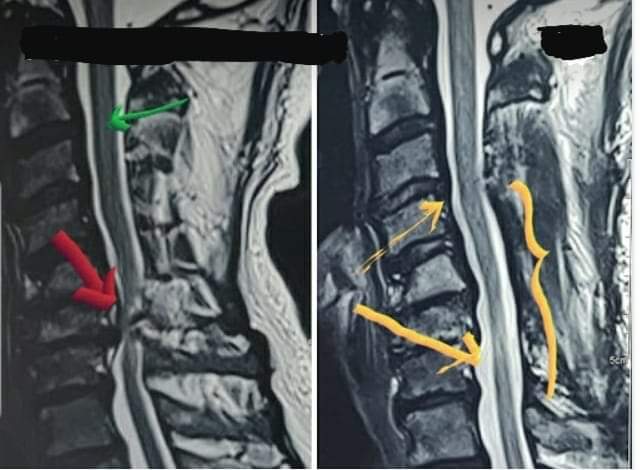This is a surgery performed to give relief to the cervical spinal cord (in the neck). This is generally done for a condition called Cervical canal stenosis. This means that the area that the spinal cord in the neck occupies is narrowed by bony spurs or multiple prolapsed cervical intervertebral discs because of degeneration. This causes pressure on the nerve roots or the spinal cord itself. This is called cervical radiculopathy or cervical myelopathy. The neurosurgeon gets an MRI and Cervical X-rays done, and then decides what the nature of the problem is. Generally, exercises and medication may relieve pain, but if they are not effective, then a decision is made (jointly with the patient) about the operation called Cervical Laminectomy.
This operation approaches the spine of the neck from behind, and involves removing some portion of the bone and ligaments that surround the spinal cord (‘the roof’), providing more space for it, and therefore relieving the symptoms.
Generally speaking, the patient is able to walk the very next day after operation and should get discharged soon, based on recovery and other illnesses. A cervical collar may be prescribed for a small period of time till the wound heals.
Dr Jaydev Panchawagh writes:
Compression of the spinal cord in neck region due to advanced spondylosis is not uncommon.
The spinal cord is an electrical cable taking information from the brain to the hands and legs and vice versa. So, any compression here causes serious disturbances in this process.
The symptoms are
…Loss of balance while walking
…Loss of dexterity of the hands
And if not treated in time, there is loss of power in hands and legs, making the person chair and bed bound.
The clinical condition is known as Cervical Spondylotic Myelopathy (CSM).
Such symptoms need a Neurosurgeon’s evaluation and MRI scan of the spinal cord.
The compression needs to be removed either from back side (Laminectomy) or from front side (surgery called ACDF). This patient came with Severe loss of balance while walking and loss of power in both the hands. The symptoms were neglected and subjected to neck movement exercises due to over-enthusiastic but misplaced advice. which caused further damage to the spinal cord.
In the left picture one can see how severely the cord was compressed (Red Arrow). Normal cord is shown with the Green arrow.

The right sided picture shows the portion of the compressed cord totally decompressed after surgery at the Neuro-Spine Centre (yellow arrows).
This person is now neurologically back to near normal and functionally improved.
Few things to remember:
1. Do not take such symptoms lightly, get appropriate surgical consultation at the earliest.
2. Exercises and physiotherapy could prove dangerous in some situations.
